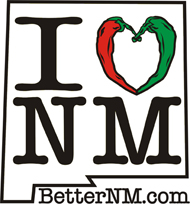Mikaela says:
I'm a culture-lover. As a repository of values, traditions, aesthetics, and worldviews, cultures often prove the true battle grounds for different groups to assert themselves in society. All cultures have the right to be present and should be celebrated. America's not so much the melting pot as the great land of overlay.
Different cultural groups use space differently, interact differently, celebrate differently, and create art and music differently. Sometimes, methods are shared among groups. Sometimes, cultures share and learn from each other. In the best cases, the coming together of multiple cultures teaches us all how to understand and love being human more than we otherwise could.
Today, in the news, two stories with culture at the heart of the issue.
First, the Smithsonian has created a Hip-hop exhibit, celebrating the diverse political and cultural history of a form of music that has transcended race and time.
Mr. Simmons, the impresario who was a founder of the Def Jam label, said that at first he had feared that hip-hop's inclusion in a major museum would mean it had lost its power and novelty. His initial thought when contacted by the Smithsonian, he said, was "It must be over."
But in an opinion echoed by nearly every speaker, Mr. Simmons suggested that as hip-hop aged it was in danger of losing its connection to its roots and that younger fans and performers would profit from direct experience of the music's history. Hip-hop, he said, is "the only real description of the suffering of our people."
Second, separate treatment programs for convicted Spanish-speaking and Indian drunk-driving offenders in Arizona are coming under attack as a new and insidious form of racial segregation.
The programs are based on an understanding that different cultural groups will have different ways to communicate and teach behavior. The main critic of the programs says this is institutionalized racism, even if it does prove effective.
This is a huge and serious question. I go round and round in my own head about this very issue in thinking about planning for neighborhood space. Cultures use space differently, and cultural groups' spaces overlap in today's cities. How do you plan for spaces that can provide for the spatial practices of individual groups without perpetuating segregation? How do you honor cultures without devolving into essentialism and divisiveness?
We need to have open and explicit conversations about possible answers.
 One model that makes me squirm and yet could be explosively powerful is a column in the Orange County Weekly: "Ask a Mexican." In simplistic terms, white people write in and ask questions that seem racist but perhaps are "merely" ignorant, and the columnist responds with humor, solid facts, and useful information in a way that honors and celebrates Mexican culture. It's a potential powder keg, but somehow, it works. Ignorance is diffused in a productive and entertaining way. Something to ponder...
One model that makes me squirm and yet could be explosively powerful is a column in the Orange County Weekly: "Ask a Mexican." In simplistic terms, white people write in and ask questions that seem racist but perhaps are "merely" ignorant, and the columnist responds with humor, solid facts, and useful information in a way that honors and celebrates Mexican culture. It's a potential powder keg, but somehow, it works. Ignorance is diffused in a productive and entertaining way. Something to ponder...In a democracy, the magic assumption is that through conversation, difference can be broached, negotiated, and honored in group decision-making. As a planner, as a supporter of all cultures, as curious and open human being, I have to believe, and, in the words of the Existentialists, take that leap of faith and act as if it's true. The signs are good.





|